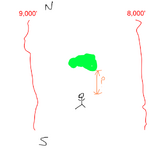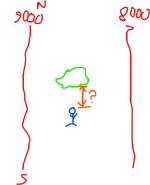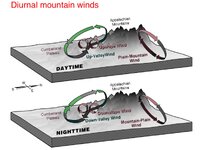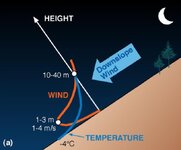This question is not generically about thermals or prevailing wind, but about experience with hunter horizontal orientation on a slope and thermals. A theoretical situation, but one that I’ve encountered is approaching an open feeding area (8500 ft) in the morning, on a slope that is east facing (ridgline running N to S), with ridge peak at 9000 ft and valley floor 8000 ft.
The elk typically bed below and work up to this feeding area before going up further in elevation to bed towards the ridgeline peak, moving E to W. In this scenario, I plan to start my hike S of the feeding area, climb in elevation while moving N, and position myself to the south of the feeding area for morning ambush at the same level or elevation that the herd will move to.
Assuming that morning thermals are moving downhill W to E into the elks’ face and prevailing winds are not impacting this and no shift in thermals, how far offset to the south (distance from the feeding area) do I have to be to not have thermals carry my scent to the elk moving E to W up in elevation and perpendicular to my S to N movement?
I can clarify if needed. Thanks in advance!
The elk typically bed below and work up to this feeding area before going up further in elevation to bed towards the ridgeline peak, moving E to W. In this scenario, I plan to start my hike S of the feeding area, climb in elevation while moving N, and position myself to the south of the feeding area for morning ambush at the same level or elevation that the herd will move to.
Assuming that morning thermals are moving downhill W to E into the elks’ face and prevailing winds are not impacting this and no shift in thermals, how far offset to the south (distance from the feeding area) do I have to be to not have thermals carry my scent to the elk moving E to W up in elevation and perpendicular to my S to N movement?
I can clarify if needed. Thanks in advance!




